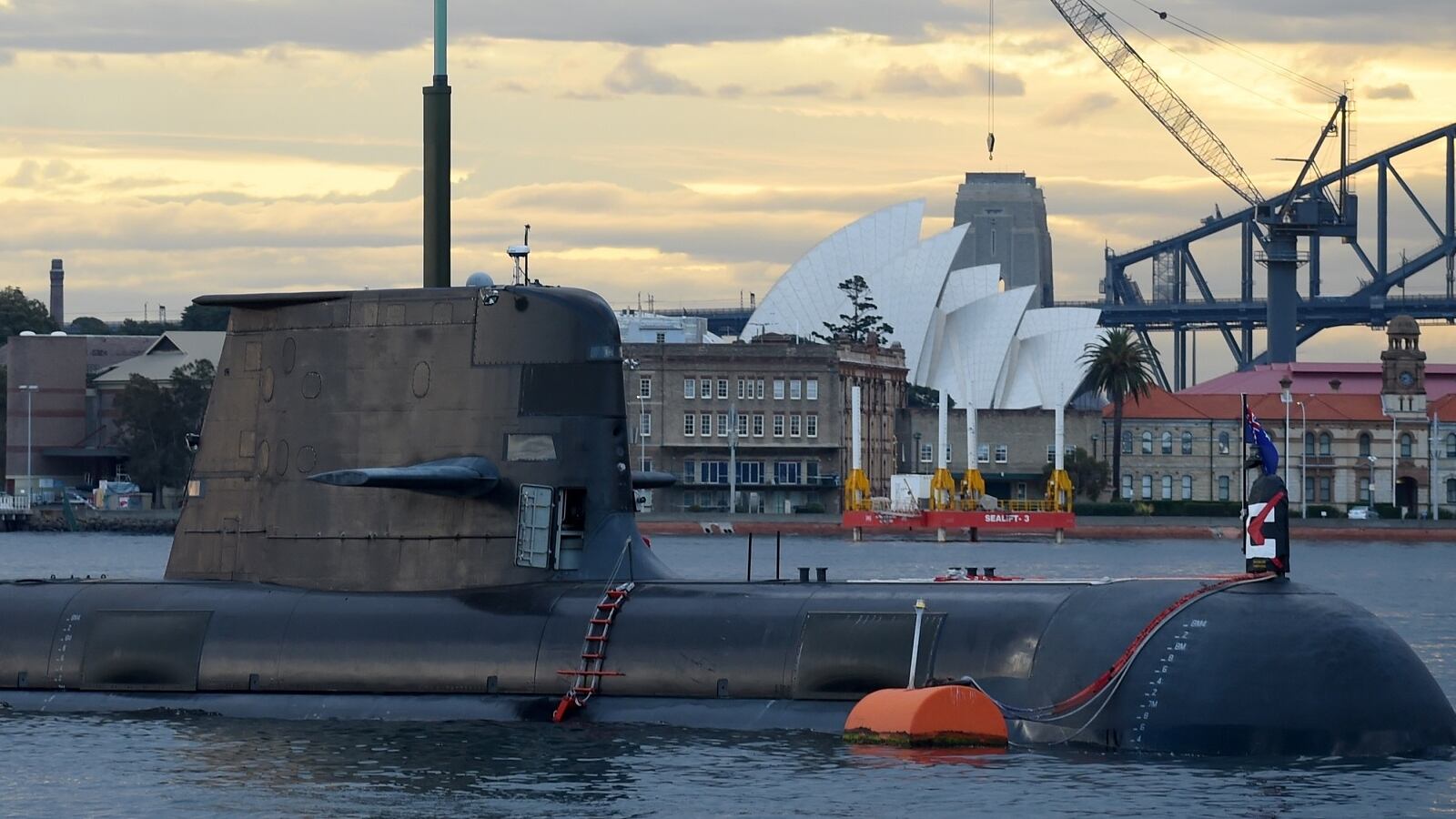RIO DE JANEIRO – The Brazilian navy launched its first domestically produced attack submarine on Friday, a move that French boat designer Naval Group hopes will lead to additional sales in the region.
The new vessel, named the Riachuelo, is a copy of Naval Group’s Scorpene-class submarine, though slightly bigger, at 1,870 tons, to enable more crew and longer range. The submarine program’s objective is protecting the vast resource-rich waters all along the country’s coastline, dubbed the Blue Amazon, outgoing Brazilian President Michel Temer told an audience at the launch ceremony at Itaguai naval base outside Rio de Janeiro. Defense News attended the launch and accepted airfare and accommodations from Naval Group.
The Riachuelo, considered roughly 80 percent complete at this point, is the first product of the Brazilian navy's $8.9 billion Prosub program. She is scheduled to begin sea trials next summer. Three identical, diesel-propelled boats are slated to follow by 2023, based on a technology-transfer contract with the French shipbuilder. A joint venture between Naval Group and local construction conglomerate Odebrecht, named ICN, assembles the boats at the new Itaguai submarine shipyard built for the program.
RELATED

The real prize for the Brazilian navy, however, will only come afterwards. Beginning in the mid-2020s, the country’s military wants to start building what Naval Group chief HervéGuillou calls the “ultimate ambition” – a program of nuclear-powered submarines.
Design work for the first nuclear submarine is already underway, with the French shipbuilder providing “assistance,” as a company brochure puts it, and the Brazilian navy in a more prominent role. The sea service here will manage all aspects of the power plant development, for example.
“Brazil is absolutely critical for Naval Group and other European players to be present here,” Guillou told reporters at Naval Group’s Rio de Janeiro office. That’s because European countries, even those spending two percent of GDP on defense, a NATO-wide objective, are unable to match the growth rate of South America’s expected military spending, he said.
The foray into Brazil and other emerging markets offers the opportunity for “critical mass” to help bridge dips in demand at home, according to Guillou.
RELATED

The French shipbuilder already has its eyes on another target, Poland, which the CEO said he wants to similarly develop into a submarine hub for regional navies. European rival shipyards Saab and Thyssenkrupp Marine Systems are also in the running for that country’s program, however, each with local work-share ambitions of their own.
Friday's launch ceremony ended with Temer and his successor, far-right President-elect Jair Bolsonaro, jointly pressing a large red button initiating the machinery for lowering the Riachuelo into the water.
“Brazil has a vocation for peace and is building its submarine not to threaten anyone or unsettle the calm of international waters,” Temer was quoted as saying in a local Reuters report. “Brazil is building submarines because a nation with more than 7,000 kilometers of coastline cannot do without tools to defend its sovereignty and it marine riches,” he said.
Bolsonaro had no speaking part in the ceremony.
Sebastian Sprenger is associate editor for Europe at Defense News, reporting on the state of the defense market in the region, and on U.S.-Europe cooperation and multi-national investments in defense and global security. Previously he served as managing editor for Defense News. He is based in Cologne, Germany.








